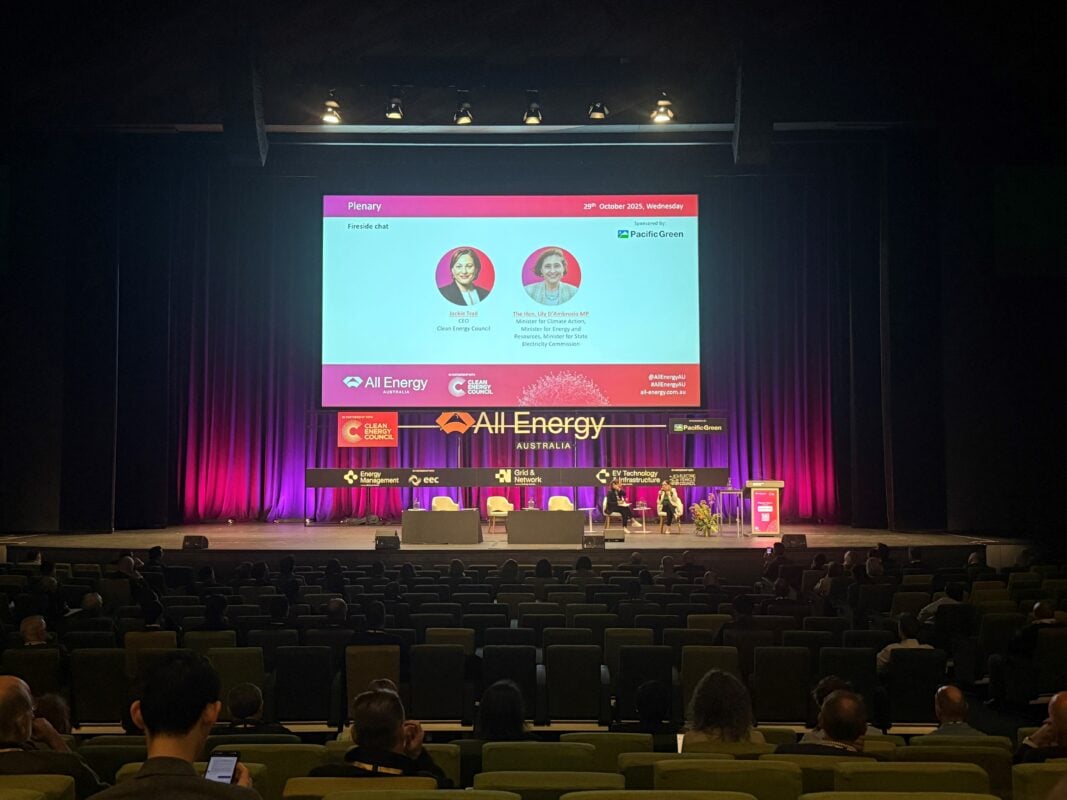Top Stories
Victoria’s Home Battery Program Exceeds Targets as Federal Scheme Begins

Victoria’s home battery energy storage programme has successfully installed approximately 20,000 residential energy storage systems, doubling its initial target of 10,000 units. This achievement was announced by the state’s climate action minister, Lily D’Ambrosio, during her address at All-Energy Australia 2025. Following this success, the programme is now being succeeded by the federal government’s Cheaper Home Batteries Program.
In her speech, D’Ambrosio commended the federal initiative for its strong application numbers, highlighting the evident demand for energy storage solutions among residents. As Australia’s longest-serving climate change and energy minister, she elaborated on the significance of residential energy storage in Victoria’s energy landscape.
“The uptake figure reflects that people are hungry for it,” she stated, indicating the growing interest in energy independence through battery technology. D’Ambrosio emphasized the importance of solar photovoltaic (PV) systems as a precursor to battery adoption, stating, “The role of solar PV has been really important for people… Now people want to go to that next step of being able to have even greater control of the energy.”
Victoria’s experience illustrates that multiple factors drive consumer adoption of battery systems beyond mere cost savings. D’Ambrosio pointed out that energy security plays a crucial role, particularly in the context of climate change, which has intensified the frequency of extreme weather events.
“We’re seeing with climate change, there are so many more storm events, so many more massive wind events, so many bushfires. That can lead to significant and long disruptions to the energy supply,” she explained. The minister noted that battery systems are increasingly viewed as a means to enhance energy security in uncertain times.
Battery storage systems also provide consumers with greater flexibility in managing their energy production and consumption. D’Ambrosio described this technology as “the next technology piece that addresses so many different consumer concerns,” underscoring its multifaceted benefits.
The broader renewable energy transformation in Victoria sets the stage for the success of the battery storage programme. In the most recent financial year, the state achieved 42.4% of its electricity generation from renewable sources, a substantial increase from less than 11% when the current government took office. D’Ambrosio remarked on this progress, describing it as a “massive jump” in the state’s commitment to renewable energy.
As Victoria transitions towards a more sustainable energy future, D’Ambrosio outlined the dual requirements of speed and endurance in this long-term process. “This transition is a long transition, but it’s a sprint every day, and will be for years to come,” she said. The state’s renewable energy strategy includes legislative targets, which D’Ambrosio believes position Victoria as a leader in ambitious yet achievable energy goals.
Regarding the transition from state to federal support for home battery storage, D’Ambrosio confirmed that Victoria met its programme objectives before transferring responsibilities. “When we rolled out the home batteries programme, we aimed for 10,000. We ended up supporting the installation of about 20,000 of those,” she stated, expressing satisfaction that the federal scheme now replaces the state initiative.
Despite the transition, the Victorian government is committed to exploring further optimisation opportunities for battery support. “We continue to look for ways to optimise further the support around that for Victorians,” D’Ambrosio said, indicating that state-level initiatives may still complement the federal programmes.
Victoria’s success in residential energy storage highlights the vital role of innovative technologies in addressing the energy challenges of the future. As the state embraces this energy transition, the lessons learned from its home battery programme will likely inform similar initiatives across Australia and beyond.
-

 Entertainment2 months ago
Entertainment2 months agoAnn Ming Reflects on ITV’s ‘I Fought the Law’ Drama
-

 Entertainment3 months ago
Entertainment3 months agoKate Garraway Sells £2 Million Home Amid Financial Struggles
-

 Health2 months ago
Health2 months agoKatie Price Faces New Health Concerns After Cancer Symptoms Resurface
-

 Entertainment2 months ago
Entertainment2 months agoCoronation Street’s Carl Webster Faces Trouble with New Affairs
-

 Entertainment2 months ago
Entertainment2 months agoWhere is Tinder Swindler Simon Leviev? Latest Updates Revealed
-

 Entertainment3 months ago
Entertainment3 months agoKim Cattrall Posts Cryptic Message After HBO’s Sequel Cancellation
-

 Entertainment2 months ago
Entertainment2 months agoOlivia Attwood Opens Up About Fallout with Former Best Friend
-

 Entertainment2 months ago
Entertainment2 months agoMasterChef Faces Turmoil as Tom Kerridge Withdraws from Hosting Role
-

 Entertainment3 months ago
Entertainment3 months agoMarkiplier Addresses AI Controversy During Livestream Response
-

 Entertainment4 months ago
Entertainment4 months agoSpeculation Surrounds Home and Away as Cast Departures Mount
-

 World2 months ago
World2 months agoCole Palmer’s Mysterious Message to Kobbie Mainoo Sparks Speculation
-

 Entertainment2 months ago
Entertainment2 months agoITV’s I Fought the Law: Unraveling the True Story Behind the Drama





















